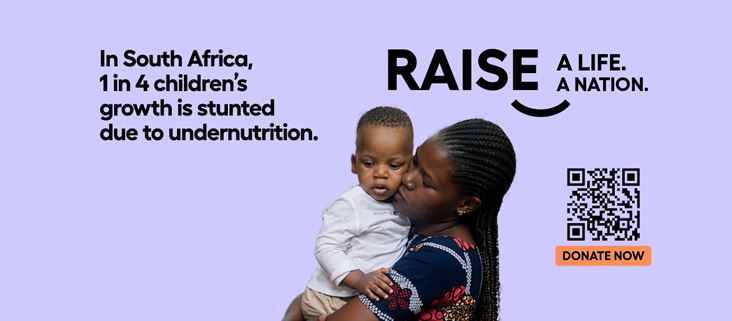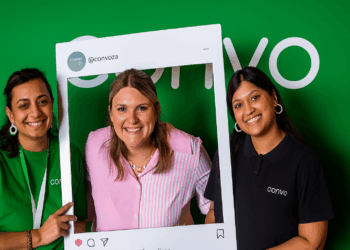At first glance, stunting looks like a problem you can measure with a tape measure. But behind the statistic lies an invisible theft: of height, of health, of learning, and of a country’s future. Stunting — children who are “too short for their age” — is not simply about stature. It is a marker of deep, early-life nutritional failure that can lock entire generations into lower earning power, poorer health and diminished cognitive potential. South Africa is paying that price now. And unless everyday citizens, business partners and government join an urgent, practical effort, the bill keeps growing.
What stunting actually means
The World Health Organization defines stunting as a child whose height-for-age is more than two standard deviations below the WHO Child Growth Standards median. In practical terms, a stunted child can be several inches — sometimes up to four to six inches — shorter than healthy peers, but the height difference is only the most visible symptom. Stunting reflects chronic under-nutrition, repeated infection and often inadequate psychosocial stimulation during the first 1,000 days of life (conception to a child’s second birthday) — the window when body and brain grow fastest.
A national problem: how big is it in South Africa?
South Africa’s most recent national survey that measured stunting (the 2016 South Africa Demographic and Health Survey) recorded a prevalence of roughly 27% among children under five — roughly one in four. Subsequent national child-nutrition analyses and civil-society surveys have continued to underline that stunting remains a major, unresolved public-health issue across provinces and communities. That means millions of South African children are starting life at a measurable disadvantage.
The invisible cost: brain, immunity and future earnings
Damage from stunting is not reversible after those early years. International analyses show that the first 1,000 days produce the bulk of brain growth; chronic under-nutrition during that window is linked to smaller brain volume, fewer neural connections and measurable reductions in cognitive outcomes and school performance. The World Bank and UNICEF note that compromises during infancy are associated with lower school attainment, reduced productivity and even GDP losses at national scale. In short: childhood stunting erodes a country’s human capital.
A low-cost intervention that reaches children
Prevention is the only truly effective answer — because once those critical years pass, lost growth and neural wiring cannot be fully recovered. Practical, evidence-based interventions include protecting breastfeeding, improving maternal nutrition, ensuring diverse complementary feeding, preventing and treating infections, and targeted supplementary nutrition for at-risk infants (for example, lipid-based nutrient supplements aligned with WHO/UNICEF guidance). Distributing small, nutrient-dense sachets through accredited NGO and early childhood development (ECD) networks is one proven, low-cost delivery mechanism that can reach vulnerable children where they are.
Compact Food Solutions: local manufacturing, local distribution
Compact Food Solutions (CFS), the organisation behind the “Raise a Life. Raise a Nation.” campaign, manufactures ready-to-use nutrition products and lipid-based supplements in Cape Town and partners with accredited NGOs to distribute them to ECD centres and vulnerable households. CFS says targeted sachet distribution can plug critical micronutrient and protein gaps in the first 1,000 days and form part of prevention-focused programmes that uphold breastfeeding while strengthening complementary feeding. Their South African fundraising and awareness drive — microsite RaiseaLife.co.za and social channels — invites South Africans to donate small amounts that fund these product distributions.
On the ground: a public awareness push in the Western Cape
From Wednesday, 29 October 2025 to Sunday, 2 November 2025, Compact Food Solutions will be at three major Western Cape malls — Canal Walk, Tyger Valley and Cavendish Square — to explain stunting to families, show how small nutritional interventions can stack up to life-changing impact, and invite shoppers to give. The campaign is deliberately public: stunting is a problem that thrives in silence. Public stalls, ambassadors and informational materials aim to translate the science into simple actions people can take — from small donations to volunteering at ECD centres. (Campaign dates and venues published by Raise A Life materials.)
Why this matters for every South African
When a child is stunted, the cost is both human and economic: poorer health, lower school performance, higher vulnerability to disease and lower lifetime earnings. Those realities widen inequality and blunt national productivity. Conversely, investing early — with targeted nutrition, maternal education and WASH (water, sanitation and hygiene) supports — delivers outsized returns: healthier children, stronger learners and a more productive workforce. That’s the meaning behind the campaign slogan: Raise a Life. Raise a Nation.
How you can help — simple, tangible actions
-
Visit the CFS stands at Canal Walk, Tyger Valley or Cavendish Square between 29 Oct — 2 Nov 2025 to learn, donate or volunteer.
-
Donate via the campaign microsite (RaiseaLife.co.za) to fund sachets targeted at the 6–23 month age group.
-
Support accredited NGO distribution partners in your area, or lobby local ECD centres to adopt prevention-focused nutrition protocols. www.raisealife.co.za
The final measure: prevention, not pity
Stunting is not merely a private tragedy. It is a public-policy emergency that steals potential at scale. The facts are stark, the science is clear, and the remedy — while not a single silver bullet — is practical, evidence-based and eminently fundable. A small nutrient sachet in a child’s daily diet does more than add calories: it preserves the fragile architecture of a developing brain, sustains immunity, and keeps that child on the ladder to school and work. This is not charity. It is an investment in a nation’s future.
Raise a Life. Raise a Nation. If you care about South Africa’s future, start by measuring the cost of silence — then act. For more details, visit the campaign microsite and social pages: RaiseaLife.co.za; Facebook, Instagram and TikTok at @raisealiferaiseanation.






























